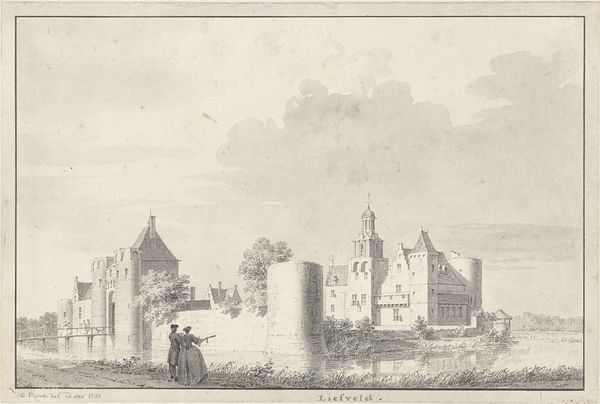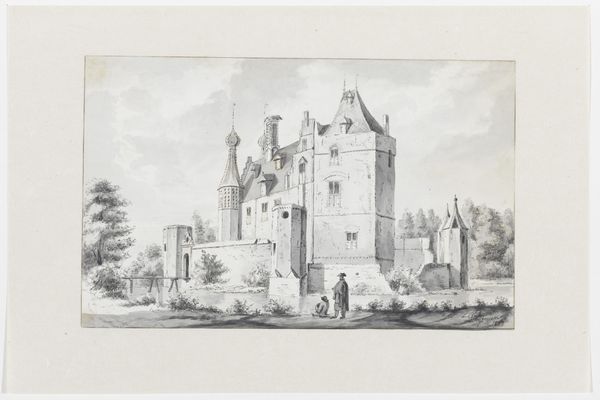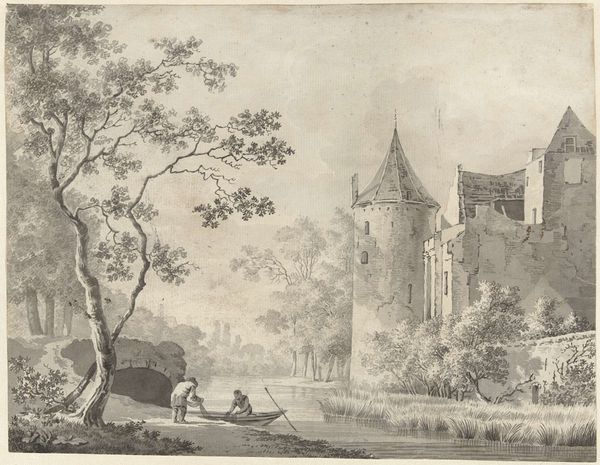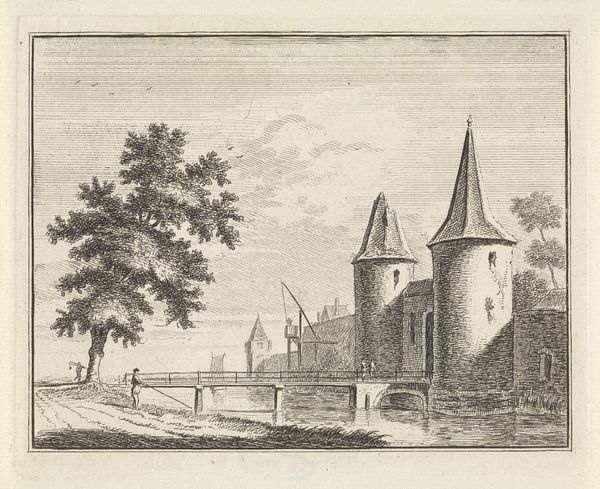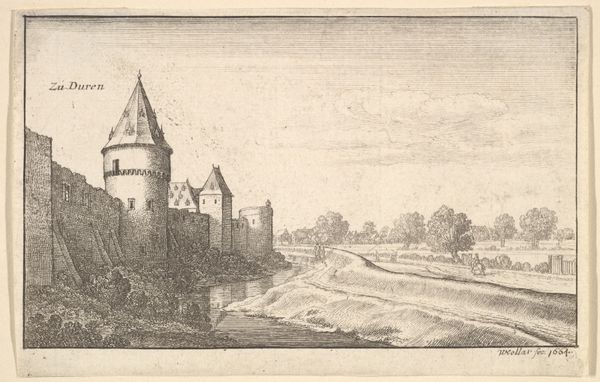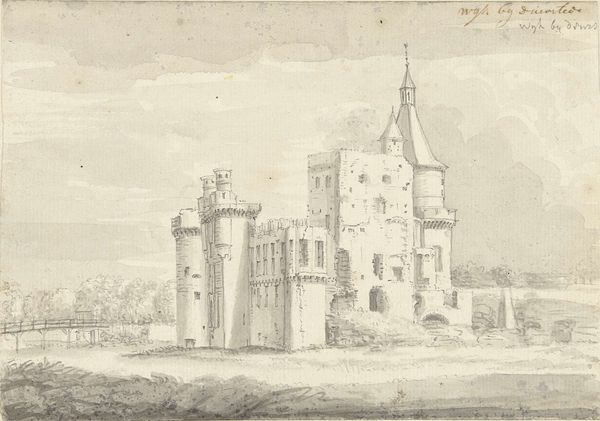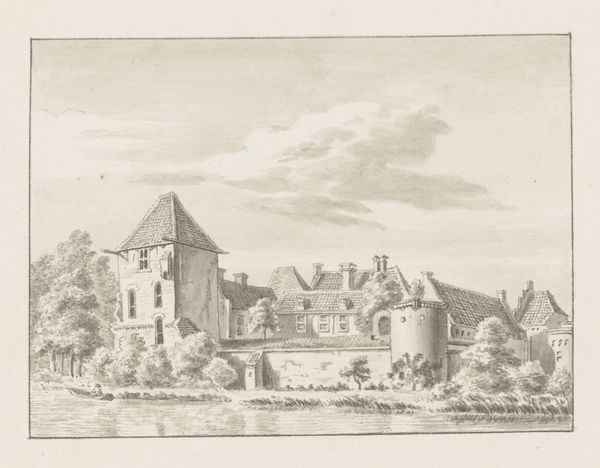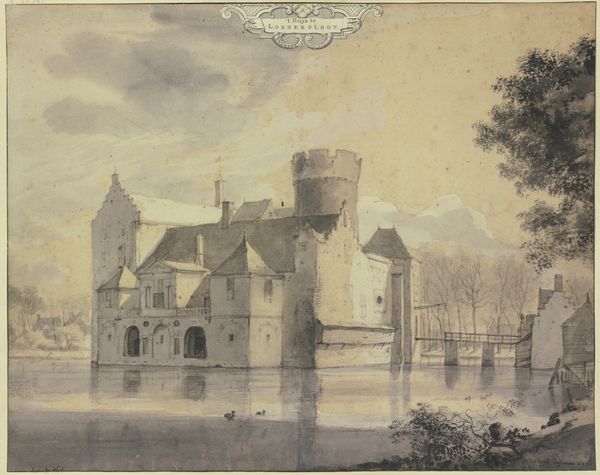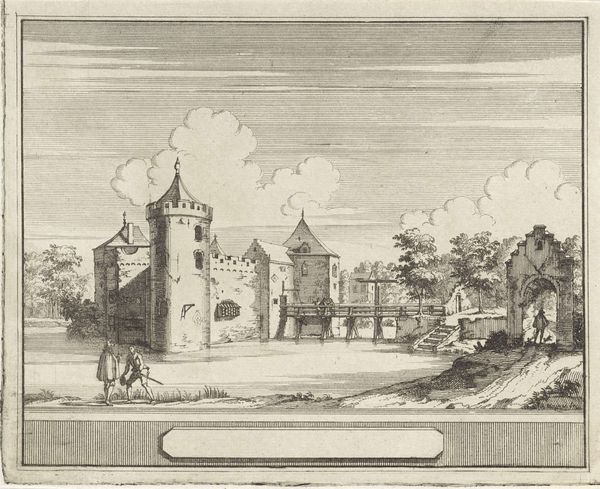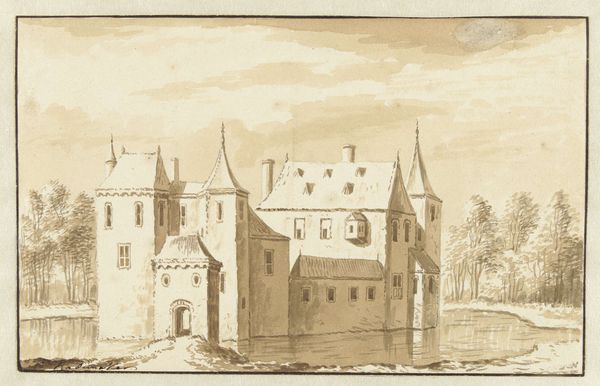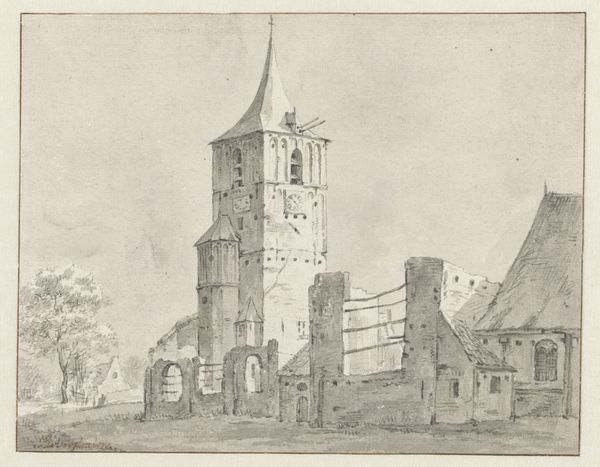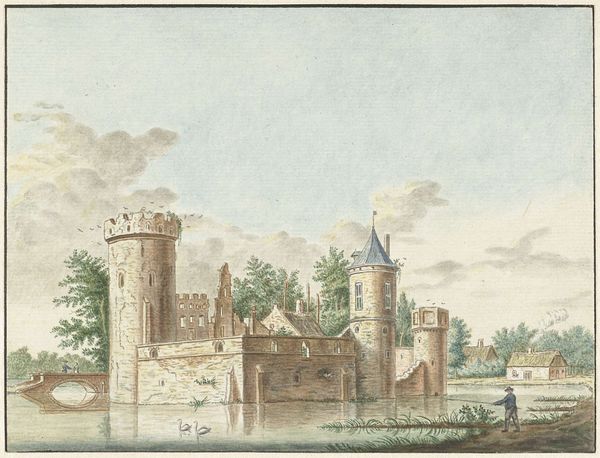
drawing, print, etching, paper, ink, pen
#
drawing
# print
#
etching
#
pencil sketch
#
landscape
#
paper
#
ink
#
pen
#
cityscape
Dimensions: 214 × 325 mm
Copyright: Public Domain
Editor: So here we have Paul Liender's "The City Walls of Utrecht by the 'Plompetoren'," made in 1763, a pen and ink drawing and etching on paper. The textures in the stonework and foliage are really beautiful. What draws your eye in this piece? Curator: Well, considering Liender’s choice of pen, ink, and etching, we should investigate why he opted for reproducibility. It allowed for wider consumption of this imagery, reflecting a growing market for picturesque views of the Dutch Republic, which commodified the image of the city itself. Editor: Interesting. So, more like a postcard than a painting, you're saying? Curator: Precisely. This isn't just a depiction, it's a commodity made to be consumed. Think about the paper itself. Its sourcing, production – that represents a whole system of labor and resources, integral to the image itself. The type of ink is important, too, it indicates where and how Liender acquired his materials and how he intended for it to age over time. Editor: I hadn't considered the paper and ink that way before, as a sign of commerce and wider social context. Curator: And consider the “City Walls” themselves. Were these structures still functionally defensive, or were they, too, becoming a commodity, a picturesque remnant of the past marketed for its historical association rather than practical value? Think of the labour required to keep them standing. Editor: It sounds like this isn’t just a landscape but a glimpse into the economy and material culture of the time. Curator: Exactly. We must look at the production and the materials not just for their aesthetic qualities, but as tangible connections to the society that produced and consumed them. This makes the art less precious, in a way, and more relatable to the systems of production that continue to this day. Editor: I see what you mean! Now, looking at the lines, I'm considering them in terms of labor as well. Curator: Precisely, and this understanding helps us see beyond the surface and truly grasp the context in which it was created.
Comments
No comments
Be the first to comment and join the conversation on the ultimate creative platform.

